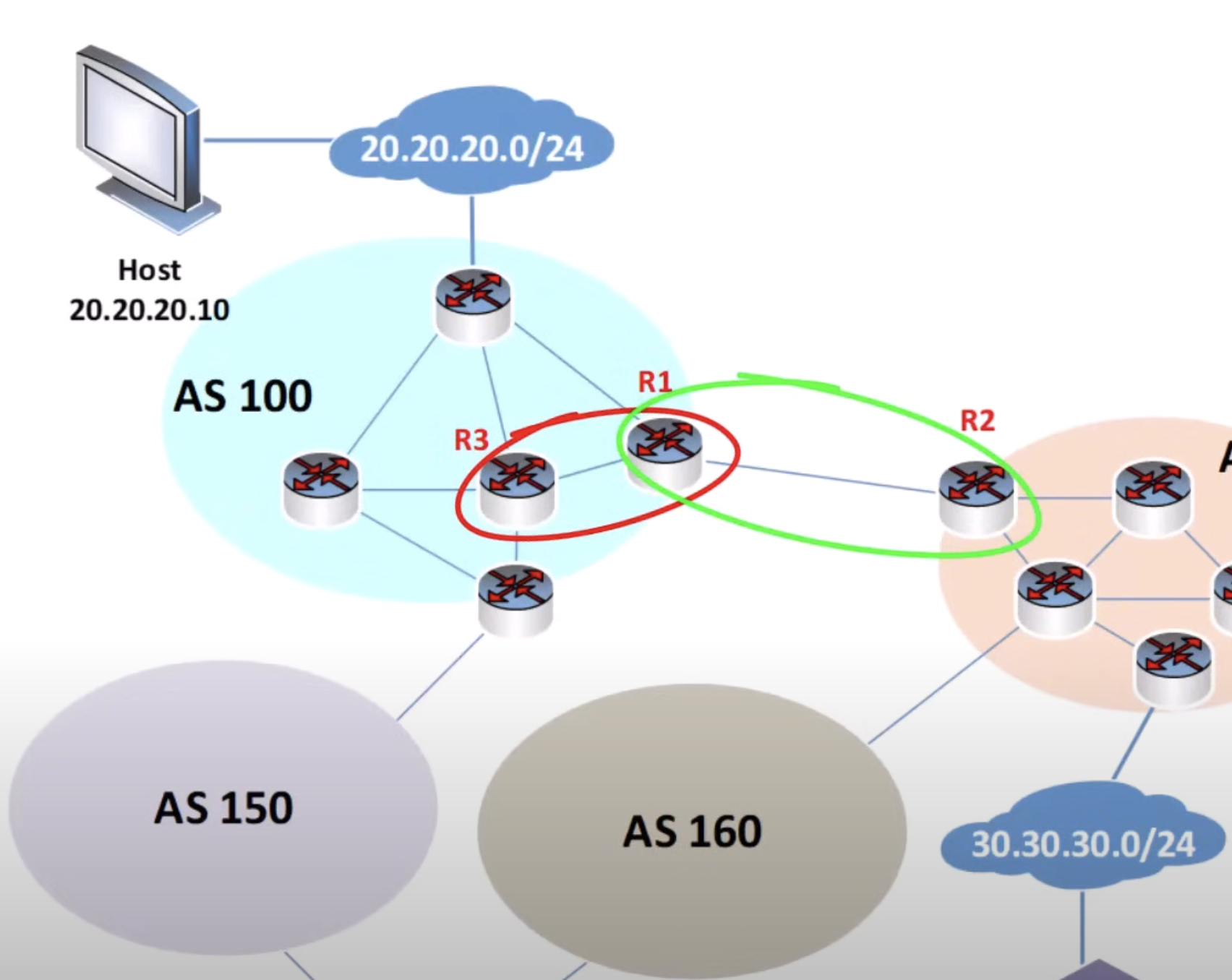Ibgp (Interior Border Gateway Protocol)
Used inside an AS (Autonomous System) to handle the internal routing using BGP (Border Gateway protocol).
Requirement
- For a router to be iBGP compatible, it requires that the iBGP network needs to be a full-mesh BGP peering arangement
- Which means each iBGP router needs to be able to talk with ALL iBGP router within an AS (Autonomous System)
- Note: eBGP doesn't need this.
- Internal iBGP route will not be advertised to those in the same AS (Autonomous System) to avoid loop
Two iBGP (Interior Border Gateway Protocol) router connects together is called a iBGP route
The next hop attribute of iBGP will be unchanged as it should inherits from eBGP (External border gateway protocol) next hop value
The list of AS Path of iBGP is unchanged as well as it has to follow eBGP (External border gateway protocol)
Example
For example, in this diagram

R1 and R3 is an iBGP (Interior Border Gateway Protocol) peering since they talks to eachother.
Whereas R1 and R2 is eBGP (External border gateway protocol) peering since it's different AS (Autonomous System)
Note that in this case, if we use show ip bgp sum it might look like this:
Router# show ip bgp summary
BGP router identifier 192.0.2.1, local AS number 65000
BGP table version is 9, main routing table version 9
8 network entries using 960 bytes of memory
8 path entries using 512 bytes of memory
4/4 BGP path/bestpath attribute entries using 448 bytes of memory
2 BGP AS-PATH entries using 48 bytes of memory
1 BGP community entries using 24 bytes of memory
0 BGP extended community entries using 0 bytes of memory
0 BGP route-map cache entries using 0 bytes of memory
0 BGP filter-list cache entries using 0 bytes of memory
BGP using 1992 total bytes of memory
BGP activity 8/0 prefixes, 8/0 paths, scan interval 60 secs
Neighbor V AS MsgRcvd MsgSent TblVer InQ OutQ Up/Down State/PfxRcd
192.0.2.2 4 65000 32 31 9 0 0 00:13:45 5
198.51.100.2 4 65000 29 28 9 0 0 00:13:45 3
In here our neighbour has the same ASN of 65000